Do the words
clothes rationing
send a shudder down your spine?
Before you run off to lock your closet, let me assure you that this World War II practice is not being reinstated.
Well, not yet, anyway.
But you might find (once the initial shock of the notion has faded) that you are pondering its practicality.
Hmmm …

Image courtesy of the Board of Trade, artist Donia Nachshen, Her Majesty’s Stationery Office via Wikimedia Commons
Clothes rationing was in fashion (euphemistically speaking) in the U.K. from 1941 to 1949, when manufactured commodities were limited. At first, each adult in the country received an annual allotment of 60 coupons, but as time went on, the number was reduced to 48. Kids were given an extra 10 coupons each to account for growth.
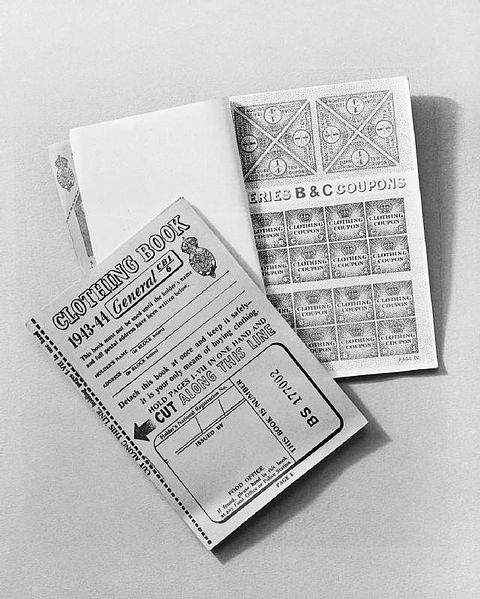
Image courtesy of Ministry of Information Photo Division Photographer via Wikimedia Commons
According to the sustainable fashion hub Ecouterre, “You had to be judicious in your selections; a petticoat or slip ‘cost’ three coupons, a woolen dress eleven, and a men’s overcoat an extravagant thirteen. Even a pair of socks required at least one coupon.”
The kicker was that a coupon didn’t actually pay for anything—it simply represented permission to purchase a certain quantity with one’s own limited finances.
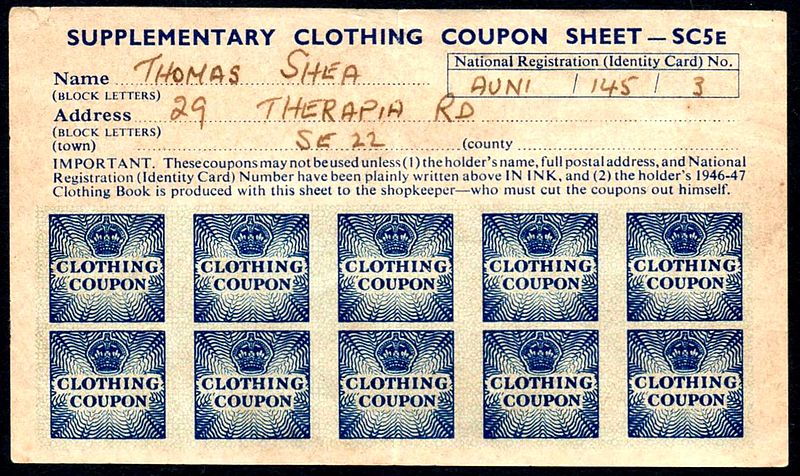
Image courtesy of the British government via Wikimedia Commons
Necessity, which we credit as the Mother of Invention, spurred a national movement of Make Do and Mend, of which my grandmother pitched in full bore. Men’s suits became children’s coats (I was the recipient of one of them) and worn trousers became vests. You see, my grandmother was of the era in which she showed up for work every day (after her children were raised) in a fancy hat and white gloves (required for her job) as a creator of sewing patterns in Denver, Colorado.
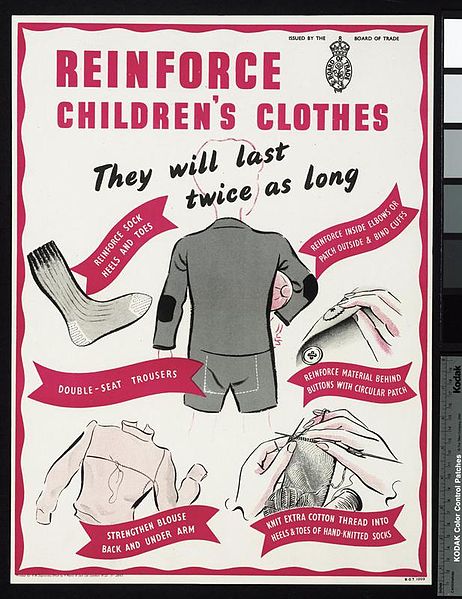
Image courtesy of Board of Trade, H Manly and Son Ltd, London N22, and Her Majesty’s Stationery Office via Wikimedia Commons
To advocate the idea of a “substitution and conversion” economy, the Ministry of Supply produced the following video clip that extolled the virtues of upcycling items—a patchwork dressing gown fashioned from fabric scraps and a shift sewn from old trousers.
“For the ladies, you may be reassured that all garments made in ‘make do and mend’ are entirely exclusive,” the narrator quips. “To the men, lock up your favorite old clothes before you leave home in the morning!”
So, you see, there is a grain of genuine sensibility here. After all, many of us live the “make do and mend” mantra as it is.
Would rationing be so ludicrous?
“The political situation may be less dire today, but scarcity, coupled with unfettered consumption, continues to be a problem,” asserts Ecouterre. “Inhumane demands, lax workplace standards, and routine abuse are the result of too much expendable income and too little social or moral accountability to rein in our impulses. Shopping has become something we do out of habit, boredom, or because we get a buzz from acquisition.”
I get waaaaay more revved about repurposing, how about you? And my favorite way to repurpose the wool from a man’s suit is to make a crazy quilt, held together using a variety of different embroidery stitches. Love the look! I did turn an old green wool army jacket into a purse once. But nothing I’ve done compares to the volume of re-use projects my grandmother and mother accomplished.














































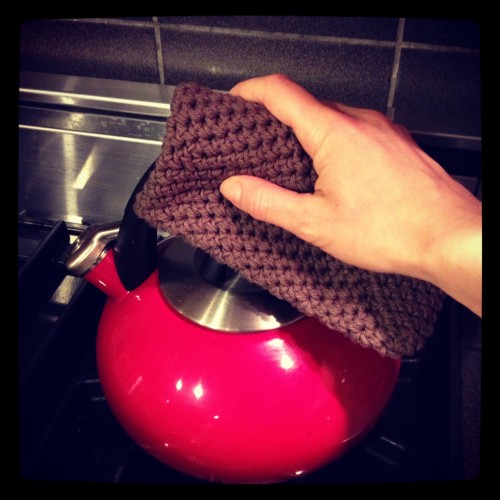

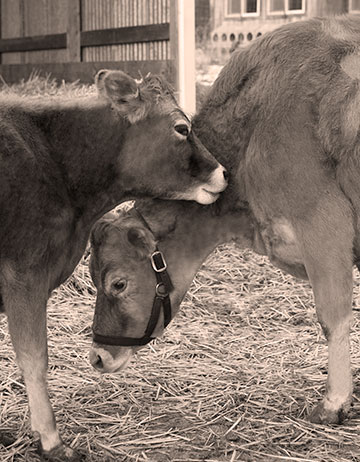 Here’s Etta Jane (2+ years) with her only calf so far, Eliza Belle (8 months). Etta Jane is three months along with another calf. Jerseys often darken in the winter, only to turn fawn-colored again in the spring when they lose their winter coats.
Here’s Etta Jane (2+ years) with her only calf so far, Eliza Belle (8 months). Etta Jane is three months along with another calf. Jerseys often darken in the winter, only to turn fawn-colored again in the spring when they lose their winter coats.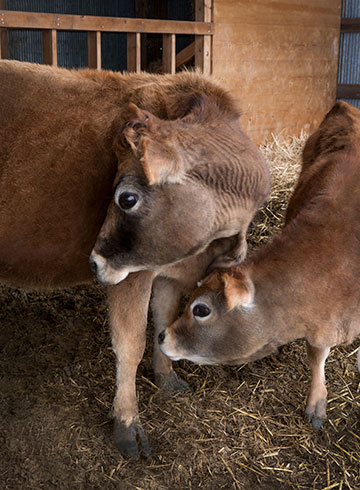 And here’s Maizy with her latest addition (third calf—second calf was a boy, Otis), Rose Etta (two weeks old).
And here’s Maizy with her latest addition (third calf—second calf was a boy, Otis), Rose Etta (two weeks old).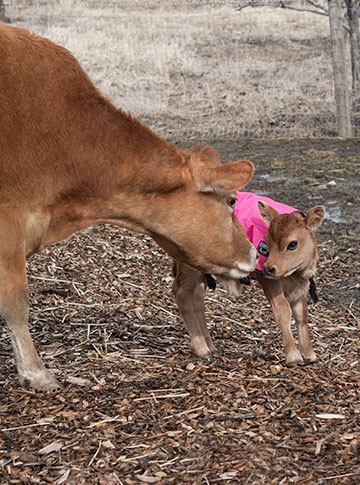 Lots of daily grooming and stimulation. Speaking of saliva baths, I remember my mother getting all five of us kids loaded into the car to go somewhere and discovering a spot on someone’s face. She’d put a bit of her hankie into her mouth, wet it, and then rub the spot off. Anyone else’s mother do that?
Lots of daily grooming and stimulation. Speaking of saliva baths, I remember my mother getting all five of us kids loaded into the car to go somewhere and discovering a spot on someone’s face. She’d put a bit of her hankie into her mouth, wet it, and then rub the spot off. Anyone else’s mother do that?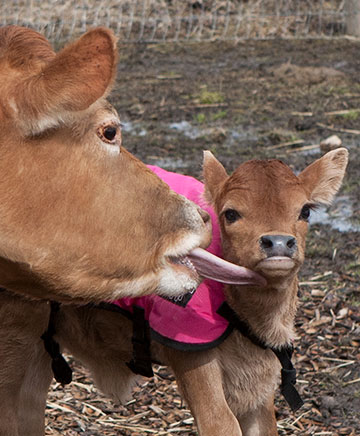







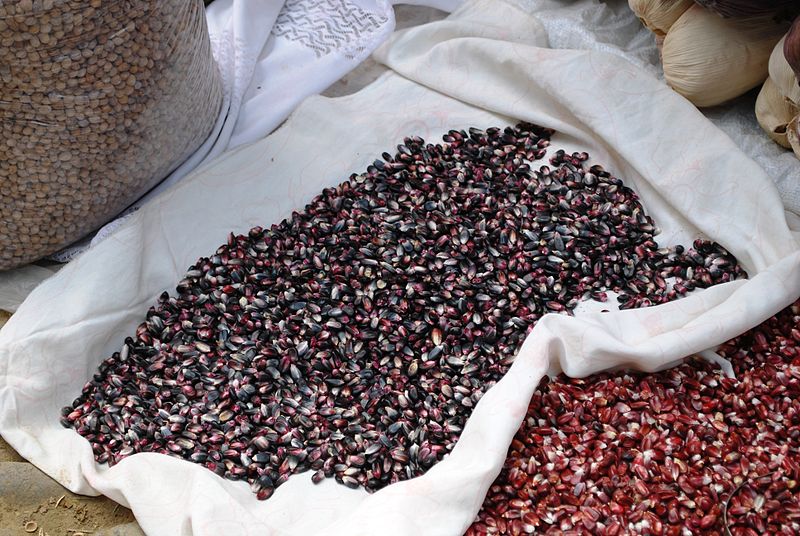

 Today is your debut. Welcome to planet earth!
Today is your debut. Welcome to planet earth! My milk cow Maizy was due Feb. 26, so starting a week ago, I began checking in on her night and day every 3-4 hours. Rose Etta weighed in at 56 pounds and there were no complications during delivery—always a relief. Every thing about her is udderly perfect and momma Maizy always does such a good job delivering her babies. I was sooooo hoping for a girl!
My milk cow Maizy was due Feb. 26, so starting a week ago, I began checking in on her night and day every 3-4 hours. Rose Etta weighed in at 56 pounds and there were no complications during delivery—always a relief. Every thing about her is udderly perfect and momma Maizy always does such a good job delivering her babies. I was sooooo hoping for a girl! I spent the morning with both of them, cleaning and washing up after the birth and getting Maizy milked for the first time in a couple of months. Once all my dairy chores were done, I headed to our design studio to finalize my next fabric collection, work on our MaryJanesFarm Sister Issue, finalize the front cover of our next magazine, work with Gabe on our new
I spent the morning with both of them, cleaning and washing up after the birth and getting Maizy milked for the first time in a couple of months. Once all my dairy chores were done, I headed to our design studio to finalize my next fabric collection, work on our MaryJanesFarm Sister Issue, finalize the front cover of our next magazine, work with Gabe on our new 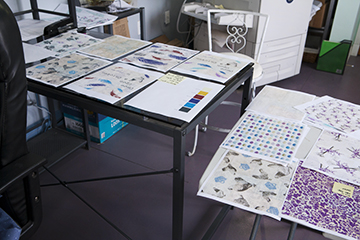 Oh, and also work with Brian on a new mud room we’re finishing. The idea with our mud room is to convert our farm facility into a boot-free zone. And because we all have such awesome footwear, it seemed only fitting that our daily line-up of boots show up in a properly decked out zone. Our two bootjacks are gonna get a workout. I know I’ll be taking my boots on and off several times a day but you know what? Mopping up all the manure we track across our floors is far more work.
Oh, and also work with Brian on a new mud room we’re finishing. The idea with our mud room is to convert our farm facility into a boot-free zone. And because we all have such awesome footwear, it seemed only fitting that our daily line-up of boots show up in a properly decked out zone. Our two bootjacks are gonna get a workout. I know I’ll be taking my boots on and off several times a day but you know what? Mopping up all the manure we track across our floors is far more work.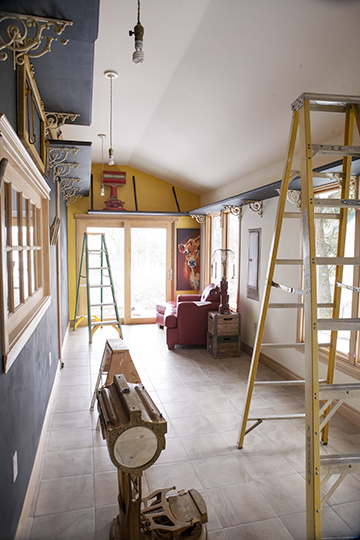

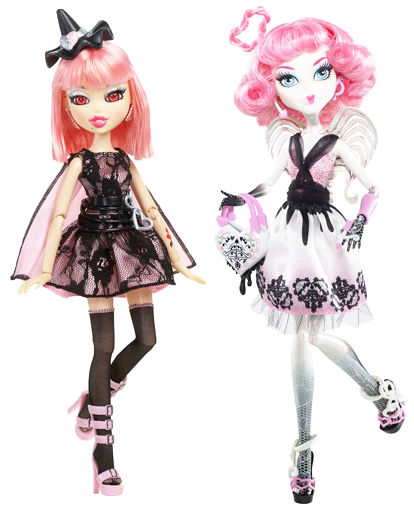


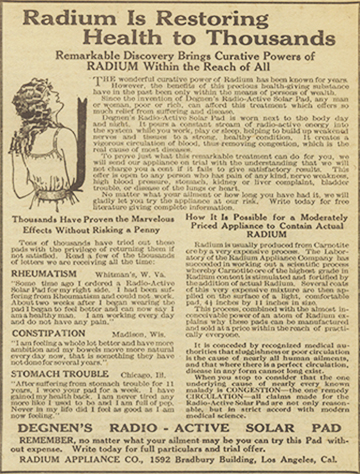










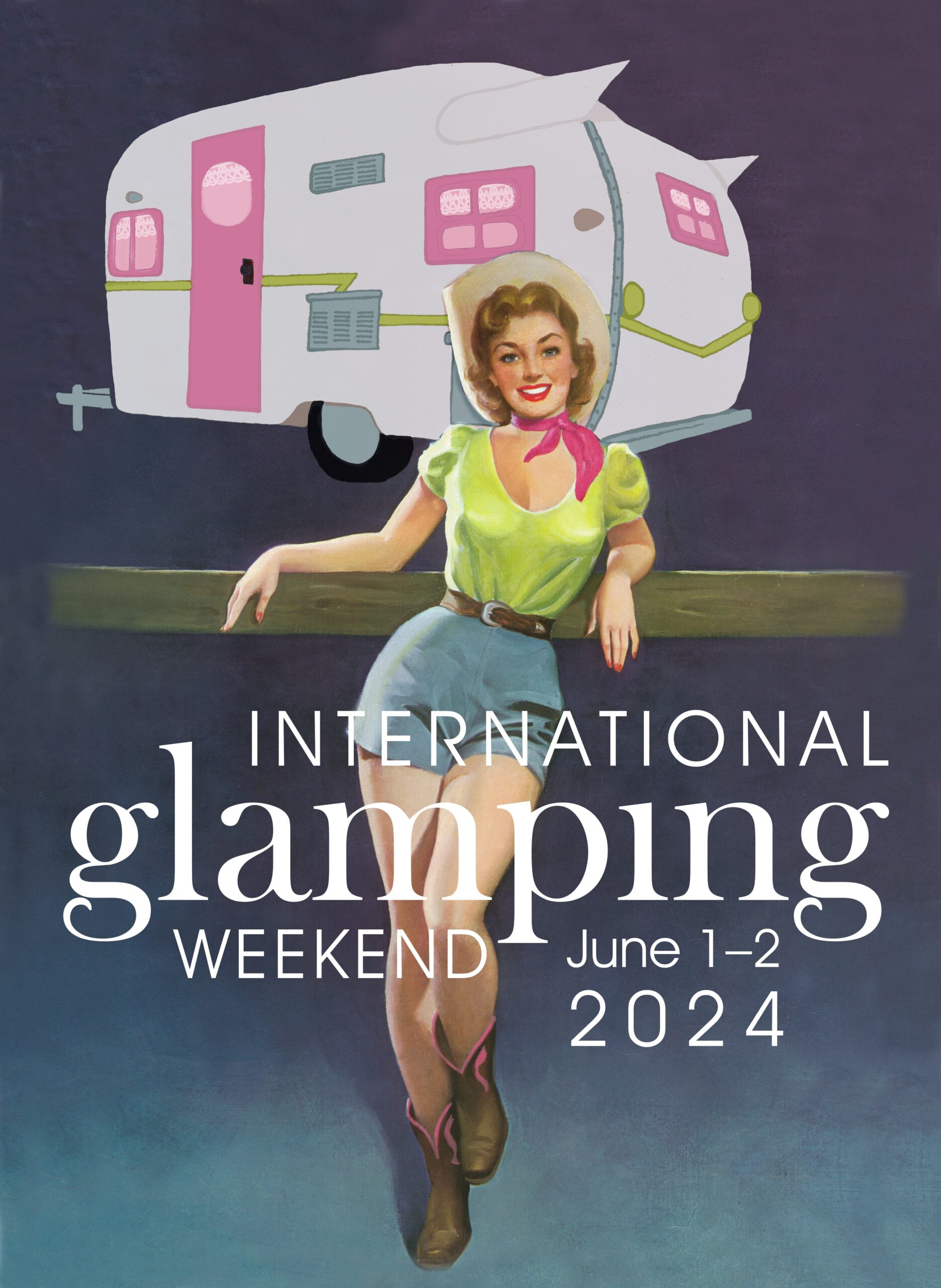


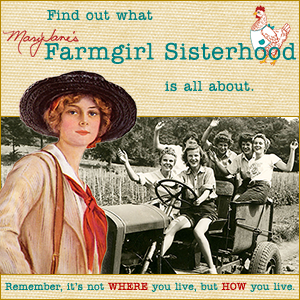


I love this message. Raising two girls, I was acutely aware of the changes of self esteem that came with middle school years. Suddenly children who were great in math struggled. School fun was replaced with worries about looks, getting teased by boys and pressures to fit in. No matter how hard the parent tries to counter this, children make their own decisions on how best to survive the everyday school experience which, unfortunately, ends up shrinking their leadership qualities. We need more teachers working on this issue in their classrooms and encouraging and helping make it safe for girls to be leaders.
Yes, it is about ” girl power”. I went to many schools growing up and one of the best was an all girl’s school because we were expected to become leaders. There was no question that we wouldn’t take on the world. There was not that line of demarcation between boys and girls and that subsequently made the students equal. Our entire society is placing the wrong values on what girls/woman should be and it starts so early now . By 4th grade the girls are all interested in “Fashion”, becoming ” famous” and not by deeds, only looks. Their studies take a very last place. It is so tragic. I was one of the ” bossy ” ones and I’m glad of it although often punished for being that way. Ok, it’s not “politically correct”, but I beat up the school bully in 3rd grade. That proved to my schoolmates that girls were equal at that time. ( mid 1950’s). It was a hugely brave moment and I felt totally justified ( which was agreed by all and sundry including parents whose children had been victimized by him .) I believe the tides are changing and more girls will be strong leaders ( but without the fists, that I needed to use )
Ladies the B word that is used more often than “Bossy” has more damage than Bossy. I heard the word Assertive for men and hen pecking for women.
The word “bossy” came from male bosses.
It is someone’s job to “Boss” the crew.
Today when older women apply to a job they are facing being interviewed by all those who will work for them. And these kids want someone to go out and drink with after work on Friday nights. They do not want a “Boss” they want a pal.
Today many young women do not act like “young women” but more like men! Foul mouthed, can’t take little ones to the locker room at the “Y” as the room is blue with bad language.
I would imagine that “MaryJanes” enterprise would not be this successful if she had not “bossed” the job! I see a boss as someone who cares enough to support lead and create a well run work place where all succeed.
Weak bosses do not make good managers.
Girls today have so many more opportunities than I ever had. If a blue color family girl can make it and succeed then today’s girls can too!
I paid for highschool, college, cosmetology school, a graduate degree and continuing education.
My most “Bossy ” boss Miss Jean M. Riggs was so tough but she created more department heads in all of her years at K-State than any other women I have known.
MaryJane has made a huge difference and she made it on her own, and I bet those Forrest Rangers called her more than “Bossy”!